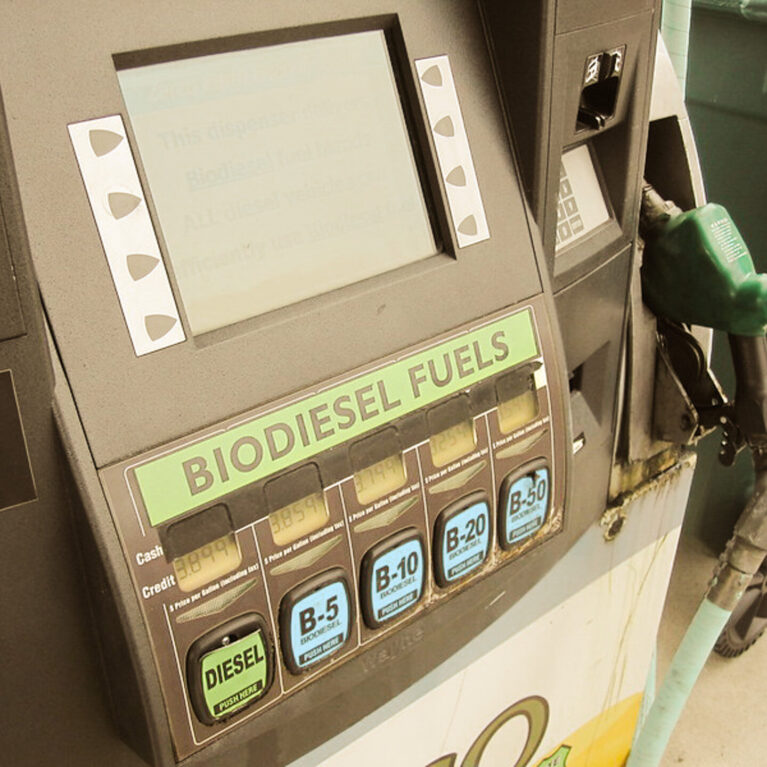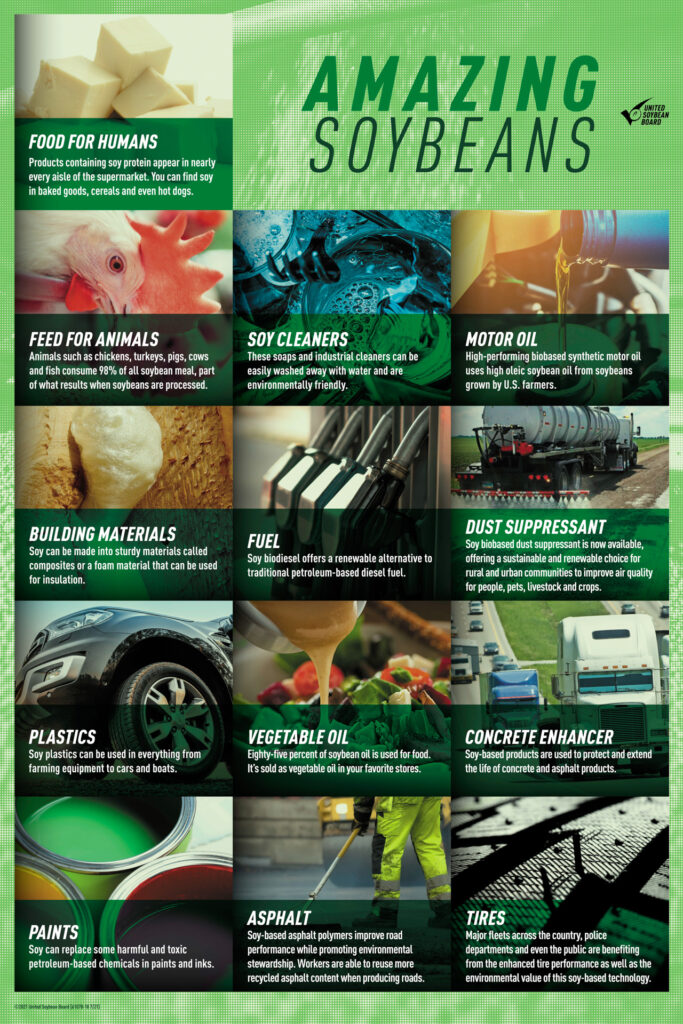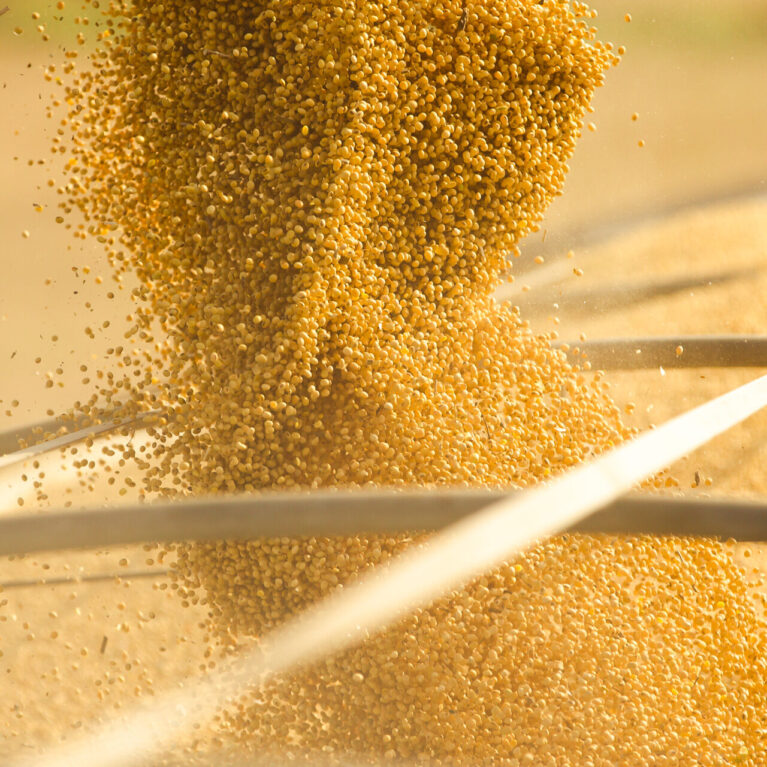
Animal Agriculture
Animal agriculture represents the largest customer for soybeans in the United States by far, with 97% of soybean meal being used in animal feed.
As the top consumer of domestic soybean meal, livestock and poultry producers are important to the stability and success of the U.S. soybean industry.
The soybean checkoff and Western Region Soybean Board supports U.S. animal agriculture to continue cultivating long-term demand for U.S. soybeans and to help maintain the future of domestic food production.

Biofuels
Biodiesel, Renewable Diesel and Sustainable Aviation Fuel
Made from an increasingly diverse mix of resources such as recycled cooking oil, soybean oil and animal fats, biodiesel, renewable diesel and sustainable aviation fuel are renewable, clean-burning fossil fuel replacements that can be used in existing diesel engines and without modification. It is the nation’s first domestically produced, commercially available advanced biofuel.
What is Biodiesel?
Produced through esterification or transesterification, a simple process that reacts a fat or oil with a small amount of alcohol (typically methanol) to produce a finished fuel. A “drop in” fuel that can be used in all engines and equipment up to 20% and many up to 100%. Made to meet the requirements of ASTM D975 (B5), D7467 (B6-20), and D6751 (B100).
What is Renewable Diesel?
Produced through hydrotreating, a process similar to a traditional refinery operation. This high-heat, high-pressure process produces a fuel that is chemically indistinguishable from conventional diesel. A “drop in” fuel that can be used in all engines and equipment up to 100%, and meets the requirements of ASTM D975 (all blends).
Better Together…
A combination of biodiesel and renewable diesel produces a cost-effective full replacement option for petroleum diesel. As a paired fuel, biodiesel and renewable diesel optimize petroleum displacement and cost, as well as particulate matter, carbon and nitrogen oxide reductions.
What is Sustainable Aviation Fuel?
Sustainable aviation fuel is produced from sustainable feedstocks and is very similar in its chemistry to traditional fossil jet fuel. Using sustainable aviation fuel results in a reduction in carbon emissions compared with the traditional jet fuel it replaces over the life cycle of the fuel. SAF must have the same qualities and characteristics as conventional jet fuel to substitute it. At present, the industry is focused on producing SAF for a “drop-in” replacement to conventional jet fuel. Drop-in fuels are combined with the petroleum-based fuel either as a blend or potentially, in the future, as a 100% replacement.
Sources: Clean Fuels Alliance America

New Uses
Beyond being used in animal feed, the soybean is used to make many of the products people use in their homes and businesses every day. Soybeans are used to make everything from soaps, lotions and cosmetics to glue and candles, to toner in printers and even skateboard wheels.
Soy can also be found in home insulation, adhesives, resins and plastics, antibiotics, ink and biofuel. It’s an incredibly diverse plant that helps to make many needed products.
Learn more at: https://soynewuses.org/


New Markets
Building domestic and global demand and seeking new uses to strengthen soybean sales.
Nationwide, exports continue to help generate demand for soy and account for 62 percent of all soybean production in the U.S.
Who are the largest buyers of U.S. soy?
Top buyers of whole U.S. soybeans include:
- China
- European Union – 27
- Mexico
Top buyers of U.S. soybean meal:
- The Philippines
- Mexico
- Colombia
Top buyers of U.S. soybean oil:
- South Korea
- Colombia
- Dominican Republic
Data source: USDA FAS Export Sales (2020)
Soybeans were again the No. 1 U.S. agricultural export commodity in 2021, with a record $27.4 billion, a 7-percent increase over the previous year.
Learn more at the 2021 United State Agricultural Export Yearbook.
